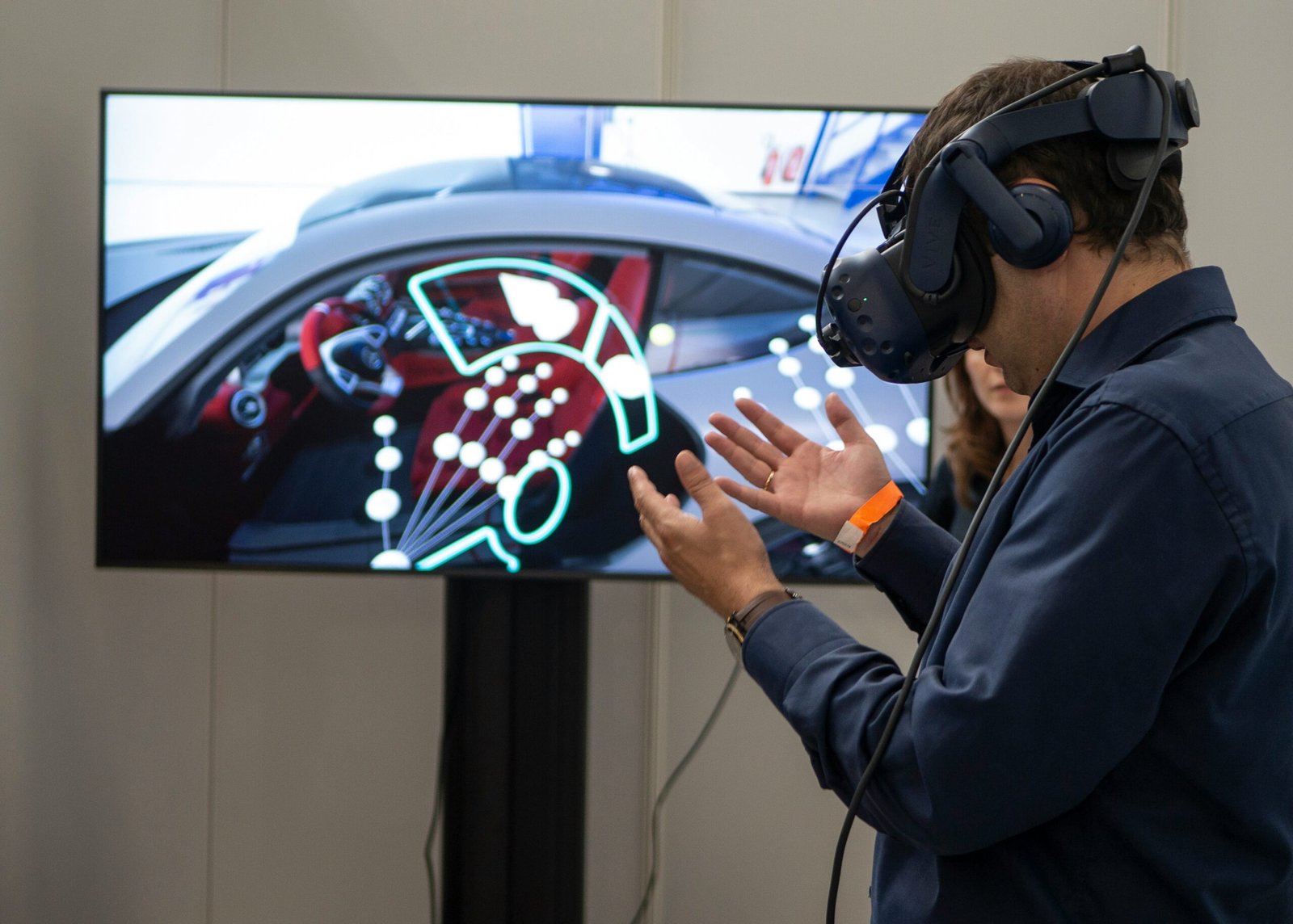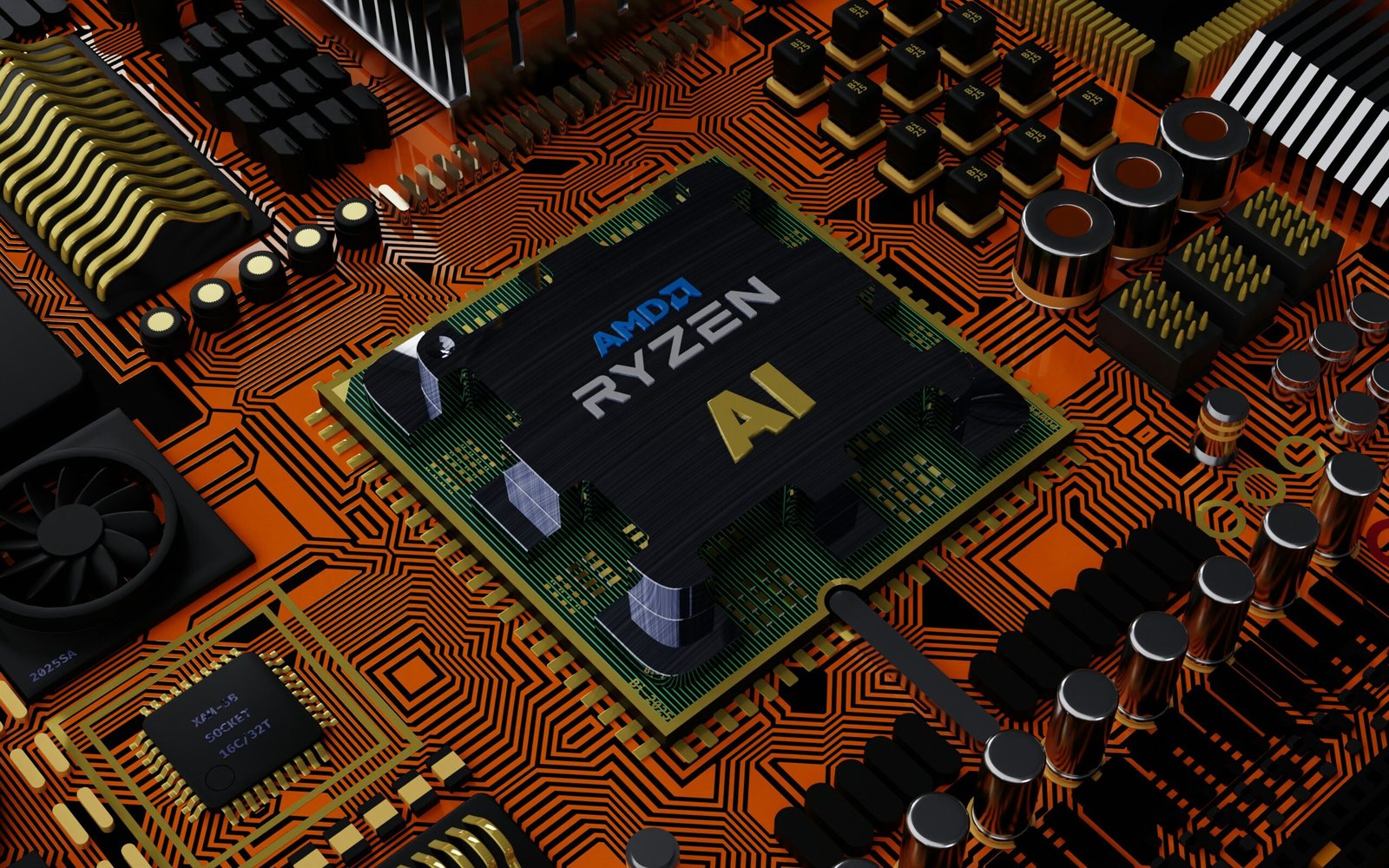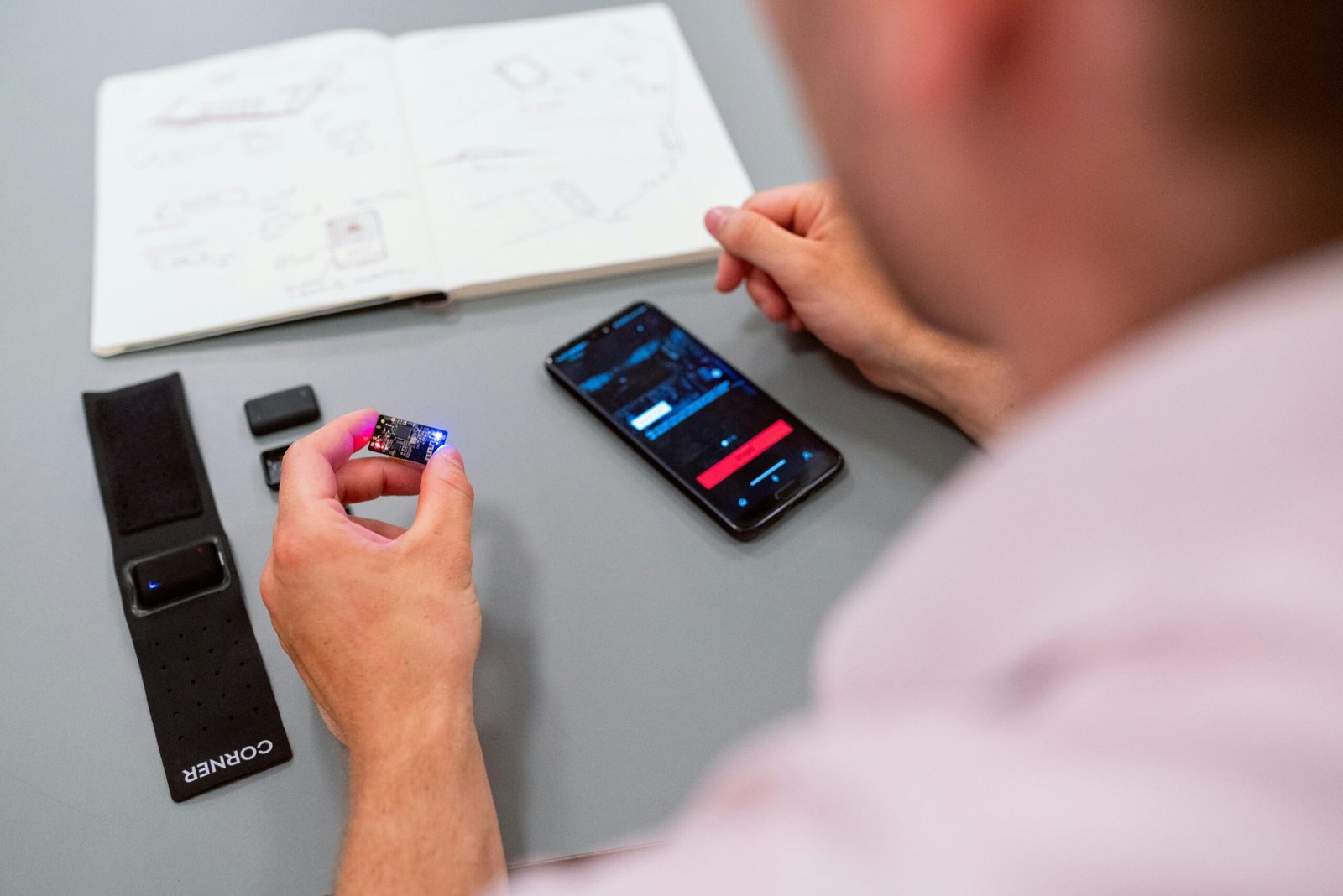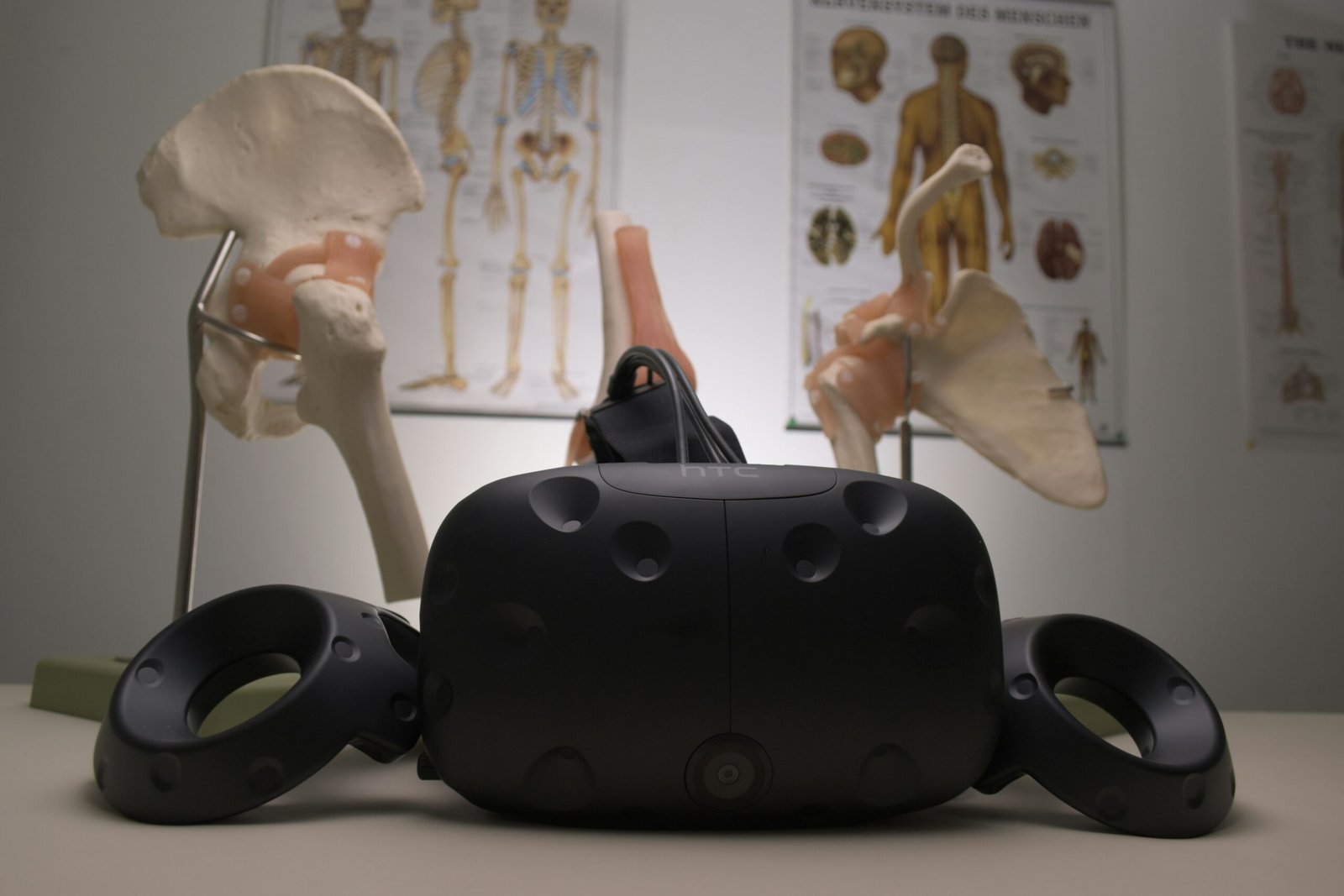Augmented Reality Shopping: Will It Change How We Buy Forever?
Introduction to Augmented Reality in Retail
Augmented Reality (AR) represents a significant shift in the way we engage with technology, particularly in the retail sector. By blending digital information with the physical world, AR allows consumers to enhance their shopping experience in unprecedented ways. This technology overlays digital elements—such as images, videos, or 3D models—onto the user’s perspective of the real world through devices like smartphones, tablets, or AR glasses. Such integration not only captures consumer attention but also facilitates a more interactive and informative shopping journey.
One of the primary applications of AR in retail is its ability to create engaging product demonstrations. For instance, consumers can visualize how a piece of furniture will look in their living space before making a purchase. Similarly, AR can assist in trying on clothes virtually, thereby eliminating the need for physical fittings. By enhancing visualization, AR aids customers in making informed decisions, ultimately leading to higher satisfaction and lower return rates.
The immersive nature of Augmented Reality also fosters a unique connection between consumers and brands. Retailers are increasingly adopting AR technology to create memorable shopping experiences that stand out from traditional methods. As consumers engage with AR features—such as virtual fitting rooms or interactive product displays—they are likely to spend more time exploring offerings and, consequently, increase their chances of purchase. This transformation can redefine consumer behavior, encouraging shoppers to embrace technology as an integral part of their retail experience.
In essence, the incorporation of Augmented Reality into retail not only enriches the shopping experience but also presents a pivotal opportunity for brands to innovate their marketing strategies. As AR continues to evolve, its potential impact on the retail landscape cannot be underestimated, signaling a shift towards a more technologically integrated future.
The Evolution of Shopping: From Traditional to Digital
The history of shopping has undergone significant transformations, primarily driven by technological advancements and shifts in consumer behavior. Traditional shopping methods, characterized by brick-and-mortar stores, have served as the primary means for purchasing goods for centuries. In this environment, consumers would physically visit stores, engaging with products directly before making a purchase. However, this model faced limitations, such as geographical constraints, time consumption, and often a lack of product diversity.
The rise of the internet in the late 20th century heralded a new era in shopping, giving birth to online shopping platforms. Consumers were suddenly able to browse and purchase products from the comfort of their homes, which greatly increased convenience and access to a wider array of goods. Nonetheless, the digital shopping experience was not without its challenges. Many consumers found it difficult to gauge the quality, fit, or appearance of products purchased online. The inability to interact with items firsthand posed a significant barrier, leading to dissatisfaction and increased return rates.
As technology has progressed, innovations such as augmented reality (AR) have emerged, presenting viable solutions to the limitations inherent in both traditional and digital shopping. Augmented reality shopping transforms the way consumers interact with products by allowing them to visualize items in their own environments through smart devices. This immersive experience not only addresses the issues of uncertainty and dissatisfaction but also enriches the overall shopping journey. By integrating AR into the retail experience, brands can create more engaging and personalized interactions, ultimately enhancing customer satisfaction and streamlining the purchasing process.
How Augmented Reality is Transforming the Retail Experience
Augmented Reality (AR) is fundamentally changing the way consumers engage with retail environments. By integrating digital information with the physical world, AR offers immersive experiences that enhance shopping decisions, paving the way for a more personalized retail experience. One of the most significant use cases of AR in retail is virtual try-ons, allowing customers to visualize products in real-time without the need for physical fitting. For example, cosmetic brands like Sephora have successfully implemented this technology in their mobile app, enabling users to “try on” makeup virtually before making a purchase, resulting in increased consumer confidence and satisfaction.
In addition to virtual try-ons, interactive product demonstrations powered by AR are becoming increasingly popular. Retailers such as IKEA have embraced this technology through their app, allowing customers to visualize how furniture would fit into their own homes. By enabling users to place 3D models of products within their personal environments, AR fosters a deeper understanding of product dimensions and aesthetics, ultimately influencing purchasing decisions. This innovative approach not only enhances customer experience but also reduces the likelihood of returns, benefiting both consumers and retailers.
Furthermore, AR enhances in-store navigation, improving the overall shopping experience. Walmart has developed an app that employs AR technology to assist customers in locating items within their vast stores. By scanning the store layout and accessing a virtual map, shoppers can efficiently find their desired products, saving time and reducing frustration. This integration of AR into the shopping experience caters to the increasing demand for convenience among consumers, aligning with modern retail expectations.
In conclusion, AR is transforming the retail landscape through innovative applications such as virtual try-ons, interactive product demonstrations, and enhanced navigation. Retailers who leverage this technology are likely to create engaging, personalized shopping experiences that resonate with consumers, ultimately redefining how we buy. As AR continues to evolve, its potential to revolutionize retail is becoming increasingly evident.
Consumer Perception and Adoption of AR Shopping
Augmented Reality (AR) shopping has emerged as a significant innovation in the retail sector, altering the way consumers interact with products. Current consumer attitudes towards AR shopping are mixed, reflecting a spectrum of enthusiasm and skepticism. Many consumers appreciate the immersive experience that AR provides, enabling them to visualize products in their own environment before making a purchase. This capability fosters a heightened sense of engagement and satisfaction, potentially leading to increased sales. Surveys indicate that consumers under the age of 35 show higher levels of acceptance towards AR shopping compared to older demographics, suggesting that technology savviness influences adoption rates.
Several factors drive the acceptance of AR shopping among consumers. The convenience of being able to try products virtually eliminates the need for physical trials, resulting in streamlined purchasing processes. Additionally, brands that invest in user-friendly AR applications often see greater consumer interest. These apps not only enhance the shopping experience but also align with the growing trend of personalization that today’s consumers prioritize. Moreover, the increasing prevalence of smartphones capable of hosting AR applications facilitates broader reach and adoption.
However, barriers remain that may hinder widespread acceptance of AR shopping. Technological limitations, such as poor internet connectivity or insufficient smartphone capabilities, can deter users from fully engaging with AR applications. Psychologically, some consumers express discomfort with relying on technology for shopping decisions, preferring traditional methods that feel more secure. Demographically, older consumers may view AR shopping as complicated or unnecessary, revealing a gap in usability and appeal. Addressing these factors is essential for the growth of AR shopping and its potential to redefine consumer behaviors in the retail space.
The Impact of AR on Retail Business Models
Augmented Reality (AR) is becoming a transformative force in the retail landscape, necessitating significant adaptations in business models. By integrating AR technologies, retailers are reshaping inventory management, marketing strategies, and customer engagement practices. This rapid evolution has implications for how businesses define their operational frameworks and engage with consumers.
Firstly, inventory management is undergoing a paradigm shift due to AR’s capabilities. Retailers can utilize AR to create virtual showrooms and enhance the visualization of products. This not only allows customers to experience items in a virtual space before making a purchase but also minimizes the need for extensive physical inventory. Such an approach reduces holding costs and optimizes stock levels, which can lead to increased profitability. For example, brands can display items digitally in a customer’s home environment, enabling personalized experiences without the operational overhead of maintaining a large physical inventory.
Moreover, marketing strategies are being redefined in an AR-centric environment. Traditional advertising has evolved into immersive brand experiences that engage customers on a deeper level. Retailers are leveraging AR to craft compelling narratives around their products, such as virtual try-ons or interactive advertisements that bring products to life. This enhances brand recall and fosters emotional connections, which can result in higher conversion rates. The engaging nature of AR-driven campaigns allows retailers to stand out in a competitive marketplace, making their messaging more impactful.
Finally, customer engagement efforts are experiencing a renaissance. AR trends enable businesses to provide innovative customer service solutions, such as virtual assistance or real-time product demonstrations. This level of interactivity not only increases customer satisfaction but also cultivates loyalty, as consumers who engage with AR experiences often develop stronger relationships with brands. As retailers adopt these innovative practices, they must remain vigilant in evaluating the effectiveness of their AR strategies to ensure they resonate with their target audiences.
Challenges Facing AR Implementation in Retail
As augmented reality (AR) technology gains traction within the retail sector, businesses are confronted with several significant challenges that must be addressed to ensure successful implementation. One of the primary hurdles is the technical complexity involved in developing and integrating AR systems. Retailers must invest in specialized software and hardware, which often requires a skilled IT team capable of not only managing the initial setup but also maintaining and updating the technology over time. This technical expertise can represent a considerable financial burden for smaller organizations or those lacking existing digital infrastructure.
Cost considerations also pose a major challenge in the adoption of AR solutions. The initial investment in AR technology can be substantial, encompassing expenses related to software development, augmented reality hardware, and the integration of immersive experiences into physical retail spaces. Many businesses may struggle to justify the return on investment (ROI), particularly if they do not have a clear strategy in place to leverage AR in a way that drives sales or enhances the customer experience. As a result, organizations must conduct comprehensive market research and detailed financial analysis before committing to AR projects.
Staff training is another critical aspect that retailers must consider. The introduction of AR solutions requires not only an adjustment in the technical infrastructure but also in employee capabilities. Staff must be adequately trained to utilize the new technology effectively, which necessitates allocating resources for training programs and ongoing support. This transition can challenge employee productivity and morale if not managed thoughtfully.
Finally, integrating augmented reality applications with existing retail systems can present logistical complications. Retailers must ensure that their AR solutions can seamlessly interact with inventory management systems, e-commerce platforms, and customer relationship management tools. Without this integration, the AR experience may not function optimally, potentially leading to customer dissatisfaction and disillusionment with the technology.
Future Trends in Augmented Reality Shopping
The landscape of augmented reality (AR) shopping is poised for transformative changes driven by several emerging trends. As technology continues to advance, the integration of artificial intelligence (AI) and machine learning will play a pivotal role in creating a more personalized shopping experience. Retailers can leverage these technologies to analyze consumer behavior, providing tailored recommendations that enhance the overall shopping journey. For instance, AI can assess individual preferences based on past purchases and browsing habits, dynamically adjusting AR offerings to suit specific user needs.
Another trend likely to shape the evolution of AR shopping is the establishment of partnerships between retail brands and leading technology companies. These collaborations can foster innovation by combining expertise in hardware and software development, leading to more sophisticated AR applications. For example, retail giants could work with tech firms to improve mobile AR capabilities, making it easier for consumers to visualize products in their own environments. This type of synergy may also encourage the development of AR tools that enhance in-store experiences, allowing customers to interact with products in real-time while receiving valuable information about features and offers.
Furthermore, evolving consumer preferences will drive the development of augmented reality. As consumers become more accustomed to immersive shopping experiences, they may demand advanced features such as social sharing options, virtual try-ons, and interactive elements that make shopping more enjoyable and engaging. This shift may also lead to increased investment in AR technology to meet consumer expectations for seamless integration across multiple platforms, including mobile devices and smart glasses.
In conclusion, the future of augmented reality shopping is bright, with significant advancements on the horizon. By harnessing AI, fostering partnerships, and responding to changing consumer preferences, the retail industry is likely to witness an evolution in how products are showcased and purchased.
Successful Case Studies: Brands Leading the AR Revolution
Augmented reality (AR) is increasingly becoming a powerful tool in the retail landscape, with several brands successfully implementing AR technologies to enhance the shopping experience. Pioneering companies have leveraged AR to create interactive, immersive environments that not only attract consumers but also influence their purchasing decisions.
One notable example is Ikea, which launched the Ikea Place app. This innovative application allows customers to visualize furniture in their homes before making a purchase. By using their smartphone cameras, users can place true-to-scale 3D models of Ikea products in their living spaces. This capability not only aids customers in decision-making but significantly reduces the chances of product returns, a common issue in online retail. Retailers can learn from Ikea’s emphasis on customer engagement through practical applications of AR technology.
Another significant case is Sephora, which has embraced AR in its Virtual Artist app. This tool enables customers to try on makeup virtually. The app uses facial recognition technology to allow users to see how various products look on their skin tones. This immersive experience not only boosts consumer confidence in their choices but also increases the likelihood of purchase. For other brands, this highlights the importance of creating personalized experiences that resonate with consumers.
Additionally, Nike’s “Nike Fit” app exemplifies how AR can enhance the customer journey by addressing fit challenges associated with footwear. Using AR technology, the app scans users’ feet to recommend the best shoe sizes, thus improving customer satisfaction and reducing return rates. This showcases the efficiency of AR in solving specific consumer pain points, an essential lesson for other brands looking to optimize their shopping experiences.
These case studies illustrate that leveraging augmented reality is not simply a trend but a significant shift in how brands are redefining consumer engagement. The successful implementation of AR technologies offers vital insights into creating effective, immersive shopping experiences.
Conclusion: The Long-Term Implications of AR in Retail
As we have explored, the integration of augmented reality (AR) into the retail sector marks a transformative shift in the shopping experience. This technological advancement not only enhances consumer engagement but also redefines the accessibility and personalization of products. Through immersive experiences, customers can visualize products in their own environment, leading to a more informed purchasing decision. The convenience and innovativeness of AR can potentially change customer expectations and the way they interact with brands.
Moreover, as retailers increasingly embrace AR, it is likely to create a more competitive landscape. Businesses not adopting AR technologies may find themselves at a disadvantage as consumers gravitate toward brands that offer richer and more interactive shopping experiences. This shift may compel traditional retailers to innovate their strategies, merging online and offline worlds to cater to the tech-savvy consumer. Consequently, the competitive dynamics within the retail landscape could evolve significantly, pushing businesses to prioritize technological adaptability.
In addition, the long-term implications of augmented reality in retail extend beyond merely enhancing consumer experience; they also foster new revenue models and marketing strategies. As AR becomes commonplace, brands can leverage collected user data to tailor experiences further, ultimately maximizing consumer satisfaction and loyalty. Furthermore, the potential for AR to support sustainable consumer behaviors cannot be overlooked, as try-before-you-buy solutions may encourage informed and deliberate purchasing choices, thereby reducing returns and waste.
In conclusion, augmented reality is poised to redefine the consumer shopping journey profoundly. With its ability to merge the digital and physical shopping realms, AR stands to not only enhance individual retail experiences but also reshape the overall competitive landscape of the retail sector. Moving forward, brands that effectively harness this technology may lead the way in reimagining retail experiences for future consumers.















Tidak ada komentar